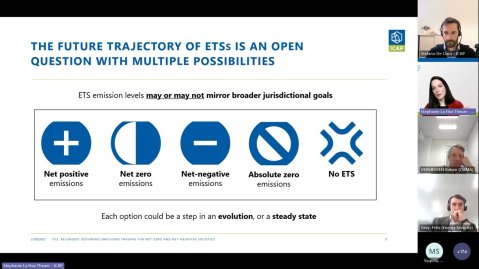ETS, Reloaded? Designing Emissions Trading for Net-Zero and Net-Negative Societies


Category
Topics
Release date
Language
Emissions trading systems (ETSs) play an important part in many jurisdictions’ mitigation strategies, but their role and design are likely to change over the decades to come. Achieving net-zero emissions by mid-century or soon thereafter is essential to keep global temperatures at safe levels. Consequently, multiple jurisdictions have adopted climate neutrality targets by around mid-century . ETSs can play a central role in this process and have been an important part of policy mixes aiming to reduce greenhouse gas (GHG) emissions by 2020 and 2030. They are very likely to remain important after 2030, but their role and design will need to evolve and change in the context of net-zero and net-negative targets and economies.
Jurisdictions can consider several ETS options, depending on their circumstances and preferences. Although a net-zero emissions design dominates much of the debate on the future of emissions trading, net-positive or net-negative ETSs can be other viable options, depending on the respective jurisdiction and its overall climate policy mix.
This report aims to contribute to jurisdictions’ process of contemplating the role of emissions trading in their trajectory towards net-zero and net-negative emissions. Some jurisdictions, such as the United Kingdom, the European Union (EU), and California, have launched discussions and public consultations on how their respective ETSs could be updated in light of their mid-century net-zero targets, by for example including carbon dioxide (CO2) removal units (RUs). More jurisdictions are expected to follow suit as they chart their pathways to decarbonization post-2030.

